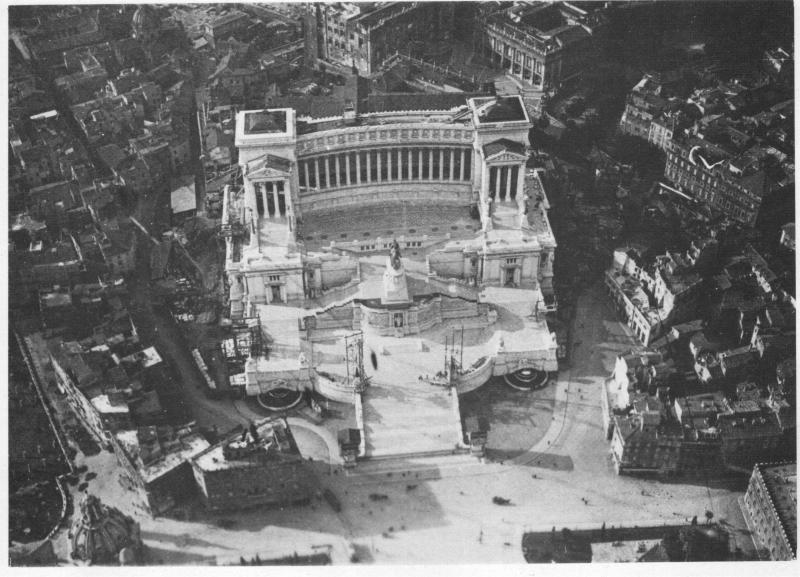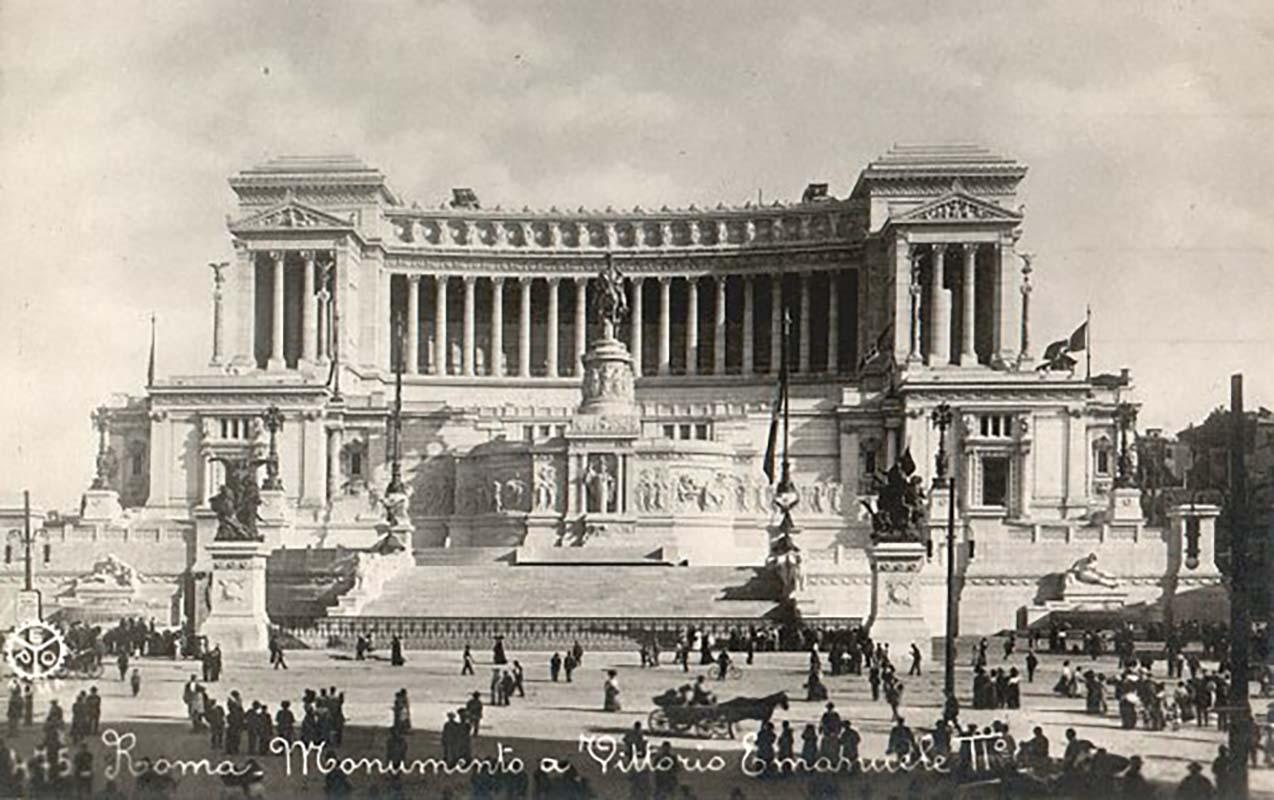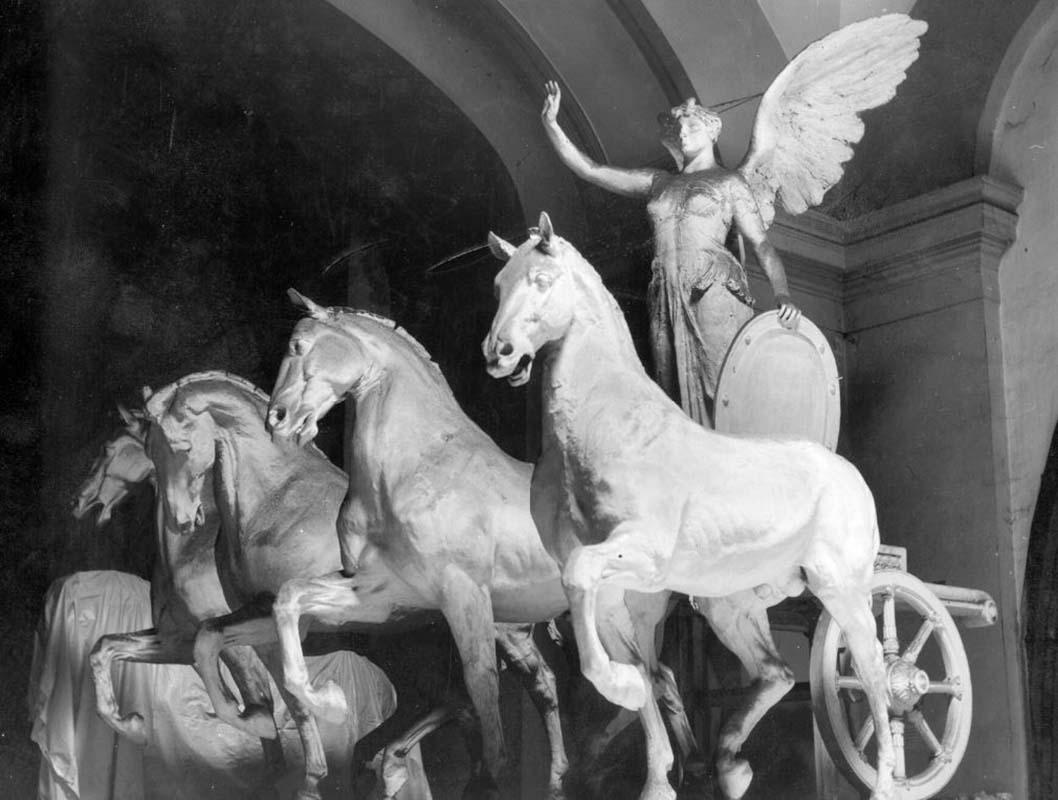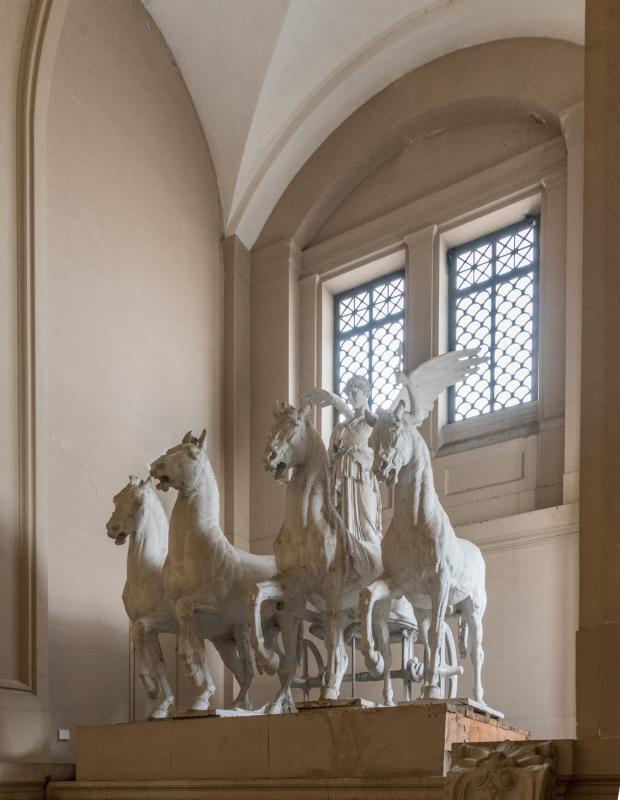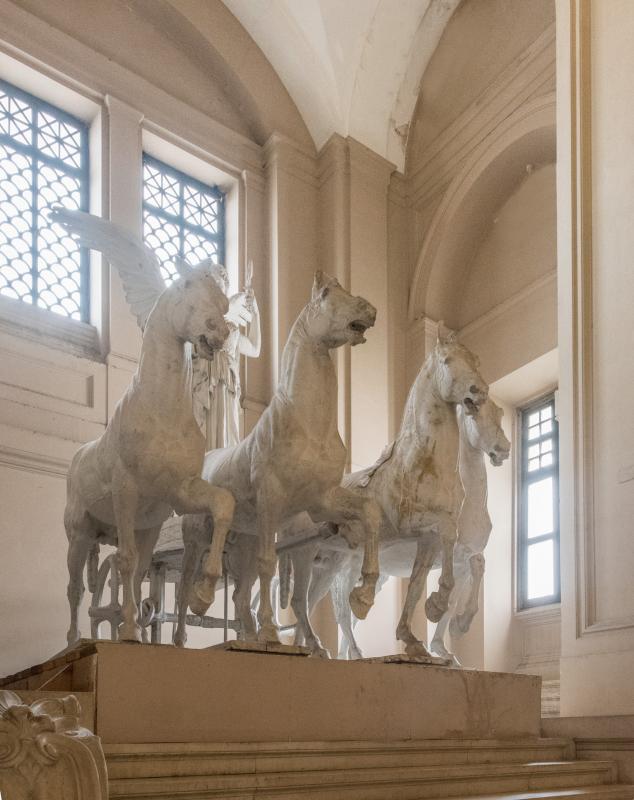The 1911 ‘dress rehearsal’
Two plaster models of the quadrigae were put in place to evaluate the overall effect
Planning and creating the quadrigae was an extremely complex task. In June 1911, for the inauguration of the monument, they were not yet in place. Indeed, as time passed, many begun to wonder if and how they would harmonise with the rest of the monument. To dispel these doubts, a ‘dress rehearsal’ was carried out before proceeding with the bronze casting process. Thus, in December 1911, life-sized plaster models were placed on top of the propylaea.
This trial proved that some of the doubts and uncertainties were well founded. The quadrigae were not at all well integrated with the architecture. The first issue was ‘technical’: the two sculptural groups were too large, therefore, they extended beyond the front roofline of the building. The second problem concerned the mode of representation: the movement of the horses, in particular, was too haphazard.

